
Claude of France reigned as Duchess of Brittany from 1514 until her death in 1524 and was Queen of France from 1515 to 1524 as the wife of King Francis I. She was the eldest daughter of King Louis XII of France and Duchess Anne of Brittany.
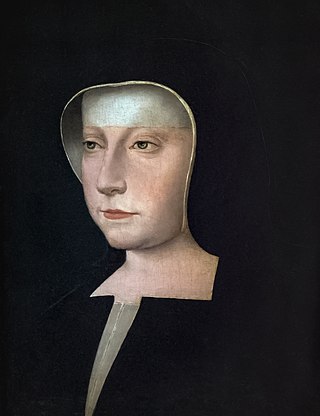
Louise of Savoy was a French noble and regent, Duchess suo jure of Auvergne and Bourbon, Duchess of Nemours and the mother of King Francis I and Marguerite of Navarre. She was politically active and served as the regent of France in 1515, in 1525–1526 and in 1529, during the absence of her son.

Margareta Ebner was a German professed religious from the Dominican Nuns. Ebner – from 1311 – experienced a series of spiritual visions in which Jesus Christ gave her messages which she recorded in letters and a journal at the behest of her spiritual director; she was ill for well over a decade as she experienced these visions. The backdrop of much of Ebner's religious life was the bitter fighting between Pope John XXII and Holy Roman Emperor Louis the Bavarian, in which she and her convent faithfully backed Louis.

Margaret of Città di Castello, TOSD was an Italian Catholic educator and a Dominican tertiary. Margaret had disabilities and became known for her deep faith and holiness.
Umiliana de' Cerchi was an Italian Roman Catholic widow and a member of the Third Order of Saint Francis.
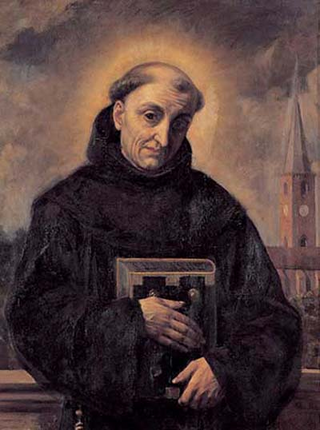
Angelo Carletti di Chivasso was a noted moral theologian of the Order of Friars Minor; born at Chivasso in Piedmont, in 1411; and died at Coni, in Piedmont, in 1495.
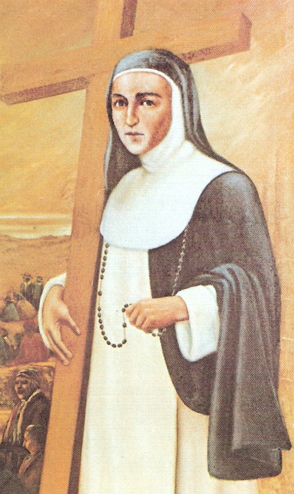
Ana Monteagudo Ponce de Leon, OP, also known as Anaof the Angels Monteagudo, was a Peruvian Catholic nun from the Dominicans.

Stanisław Kazimierczyk was a Polish Catholic priest and a professed member of the Canons Regular of the Lateran. He became noted for his ardent devotions to both the Eucharist and to his personal patron saint, Stanislaus of Szczepanów, as well as for his charitable dedication to the ill and poor of Kraków.
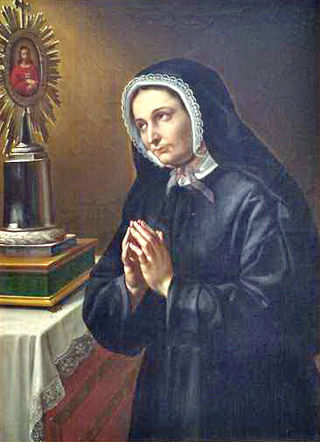
Elisabetta Canori Mora was an Italian member of the Third Order of the Most Holy Trinity. Mora married an abrasive husband who remained unfaithful and abusive to her but at the time of her death secured his repentance, and he became a priest. Mora had a range of spiritual experiences in which she heard the voice of God and visions of the Madonna and other saints while also experiencing religious ecstasies during her life.

Maria Karłowska – in religious Maria of Jesus Crucified – was a Polish Roman Catholic professed religious and the founder of the Sisters of the Divine Shepherd of Divine Providence. Karłowska worked with poor and abandoned people with an emphasis on girls and also tried to aid prostitutes avoid such a life and build another kind of life so used her order to reach out to such people to render assistance.

Teodora Fracasso, OCD - in religion, Elia di San Clemente - was an Italian Catholic nun in the Carmelites. Fracasso once had the name of "Agnes" during a stint in the Third Order of Saint Dominic. Fracasso's inclinations to become a nun stemmed from her childhood after having had a vision in 1911 in which Thérèse of Lisieux told her that she would become a nun; this realization came a decade later when she entered the convent in her native Bari where she remained for the remainder of her life.
Caroline-Barbe Colchen Carré de Malberg was a French Roman Catholic from Metz who founded both the Salesian Missionaries of Mary Immaculate and the Association of Saint Francis de Sales (1872). She married in 1849 to her first cousin and co-founded the association with the Servant of God Henri Chaumont and the missionaries with the Servant of God Félice Gros.

Agostina Camozzi - in religious Cristina - was an Italian Roman Catholic professed religious from the Order of Saint Augustine. Camozzi led a dissolute life as a widow and a soldier's mistress before she became a nun and adopted a life of total repentance.

Chiara Gambacorti, OP was an Italian Catholic nun in the Order of Preachers. She was born to rich merchants and was left a widow after a brief marriage. She escaped a second marriage after becoming a professed religious despite her father's fierce resistance.

Elena Duglioli was an Italian Roman Catholic aristocrat from Bologna noted for her devotion to Christian life and social teachings. Duglioli wanted to become a nun for the Poor Clares but instead married in order to please her parents. Duglioli is best known for commissioning a chapel with an image of Saint Cecilia to whom she was devoted.
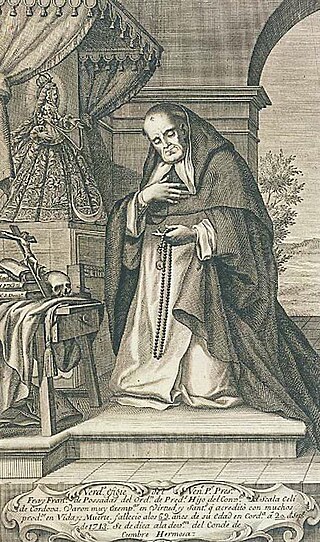
Francisco Martín Fernández de Posadas was a Spanish Roman Catholic priest and a professed member of the Order of Preachers. He became a noted preacher and popular confessor while being hailed as a second Vincent Ferrer and in the beginning was subjected to violent dislike and ridicule from fellow Dominicans before he was allowed to enter the order.
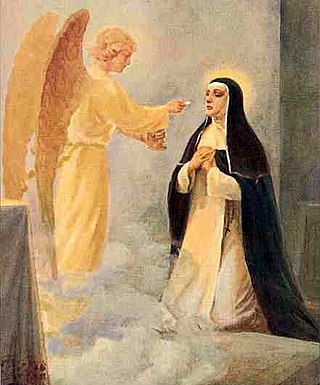
Emilia Bicchieri, OP was an Italian Catholic nun of the Dominican Order. Born to a patrician, she is best known for founding a convent in her hometown of Vercelli, where she served as prioress.

Blessed Marco da Montegallo was an Italian Roman Catholic priest from the Order of Friars Minor. He was born to a nobleman and served as a doctor in Ascoli Piceno before he was pressured into marriage in 1451 - the couple annulled their marriage after both entered the religious life. Father Marco is best known for establishing pawnshops for the poor across various Italian cities and for being a preacher of love.
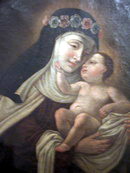
Giovanna Scopelli, O.Carm was an Italian Carmelite nun who established her own convent. Scopelli was forbidden to enter the third order branch of the order during her adolescence and waited until her parents died to embrace the religious life.

Giuliana Puricelli was an Italian Roman Catholic professed religious from the Order of Saint Augustine. Puricelli left her home after her father wanted to have her married and so fled to a hermitage where she placed herself under the spiritual direction of Caterina Moriggi. The two became close friends and their hermitage grew over the following decades. Her reputation was noted throughout the area for her contemplation and penitential practices as well as for her desire to live a cloistered life meditating on God.


















